|
Books Should Be Free Loyal Books Free Public Domain Audiobooks & eBook Downloads |
|
|
Books Should Be Free Loyal Books Free Public Domain Audiobooks & eBook Downloads |
|
Science |
|---|
|
Book type:
Sort by:
View by:
|
By: Jack London (1876-1916) | |
|---|---|
 The Iron Heel
The Iron Heel
A dystopian novel about the terrible oppressions of an American oligarchy at the beginning of the Twentieth Century, and the struggles of a socialist revolutionary movement. (Introduction by Matt Soar) | |
By: Jack Williamson (1908-2006) | |
|---|---|
 Salvage in Space
Salvage in Space
This is an SF tale of excitement, danger, derring-do and strangely enough, love. A lonely and very poor asteroid miner, slowly collecting bits of metallic ore in the asteroid belt on his slowly accumulating 'planet' of debris, sees and captures a derelict space ship with a horrible monster aboard .. as well as a dead but lovely girl. How does it all end? Well you will need to listen to find out. One of Jack Williamson's early tales that earned him his reputation as a master story teller. | |
By: Jacob Joshua Levison (1881-?) | |
|---|---|
 Studies About Trees
Studies About Trees
In this work Levison aims to create a book that allows beginners to be able to understand how to identify trees, as well as to give information of their structure and uses. Once these topics are addressed, he then moves into concepts of care, planting and forestry. | |
By: James Blish (1921-1975) | |
|---|---|
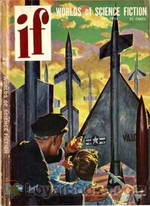 The Thing in the Attic
The Thing in the Attic
Honath the Pursemaker is a heretic. He doesn’t believe the stories in the Book of Laws which claims giants created his tree-dwelling race. He makes his opinion known and is banished with his infidel friends to the floor of the jungle where dangers abound. Perhaps he’ll find some truth down there. – The Thing in the Attic is one of Blish’s Pantropy tales and was first published in the July, 1954 edition of If, Worlds of Science Fiction magazine. | |
By: James C. Philip (1873-1941) | |
|---|---|
 The Romance of Modern Chemistry
The Romance of Modern Chemistry
A fascinating look back at the state of the art of chemistry 100 years ago, this book by James C. Philip, PhD, an assistant professor of chemistry at The Imperial College of Science and Technology, Kensington, provides a "description in non-technical language of the diverse and wonderful way which chemical forces are at work, and their manifold application in modern life" in 1910. Professor Philip relates many of the key chemical discoveries of early academic researchers in the context of the practical uses to which these discoveries were applied in the early 20th century. | |
By: James Cowles Prichard (1786-1848) | |
|---|---|
 Researches into the Physical History of Man
Researches into the Physical History of Man
Prichard’s Researches into the Physical History of Man has been called the most important pre-Darwinian anthropological work in English of the nineteenth century. He is considered by many to be the "Father of Anthropology". The central conclusion of the work is the unity of the human species, which has been acted upon by causes that have since divided it into permanent varieties or races. In his Preface, he writes: "In the course of this essay I have maintained the opinion that all mankind constitute but one race or proceed from a single family"... | |
By: James De Mille (1833-1880) | |
|---|---|
 A Strange Manuscript Found in a Copper Cylinder
A Strange Manuscript Found in a Copper Cylinder
A Strange Manuscript Found in a Copper Cylinder is the most popular of James De Mille’s works. It was serialized posthumously in Harper’s Weekly, and published in book form by Harper and Brothers of New York City in 1888. This satirical romance is the story of Adam More, a British sailor. Shipwrecked in Antarctica, he stumbles upon a tropical lost world of prehistoric animals, plants, and a cult of death-worshipping primitives. He also finds a highly developed human society which has reversed the values of Victorian society... | |
By: James J. Walsh (1865-1942) | |
|---|---|
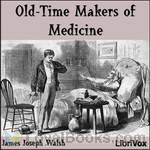 Old-Time Makers of Medicine
Old-Time Makers of Medicine
Dr. Walsh’s Old-Time Makers of Medicine chronicles the history and development of modern medicine from ancient times up to the discovery of America. Throughout this historical guide, Dr. Walsh shows numerous examples of practices thought to be entirely modern that were clearly anticipated hundreds or thousands of years ago. Ancient healers sought to use the body’s natural healing ability, rather than rely exclusively on external cures. Physicians even in ancient times relied on what is now recognized as the placebo effect... | |
By: James Orton (1830-1877) | |
|---|---|
 The Andes and the Amazon
The Andes and the Amazon
This book, with the subtitle "Across the Continent of South America" describes the scientific expedion of 1867 to the equatorial Andes and the Amazon. The route was from Guayaquil to Quito, over the Cordillera, through the forest to Napo, and, finally, on the Rio Napo to Pebas on the Maranon. Besides this record, the expedition - under the auspices of the Smithsonian Institute - collected samples of rocks and plants, and numerous specimen of animals. The scientists also compiled a vocabulary of local languages and produced a new map of equatorial America... | |
By: James Schmitz (1911-1981) | |
|---|---|
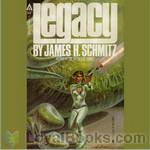 Legacy
Legacy
Ancient living machines that after millennia of stillness suddenly begin to move under their own power, for reasons that remain a mystery to men. Holati Tate discovered them—then disappeared. Trigger Argee was his closest associate—she means to find him. She's brilliant, beautiful, and skilled in every known martial art. She's worth plenty—dead or alive—to more than one faction in this obscure battle. And she's beginning to have a chilling notion that the long-vanished Masters of the Old Galaxy were wise when they exiled the plasmoids to the most distant and isolated world they knew.... | |
By: Jane Addams (1860-1935) | |
|---|---|
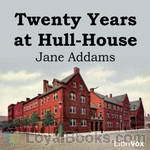 Twenty Years at Hull-House
Twenty Years at Hull-House
Jane Addams was the first American woman to be awarded the Nobel Peace Prize. In a long, complex career, she was a pioneer settlement worker and founder of Hull-House in Chicago, public philosopher (the first American woman in that role), author, and leader in woman suffrage and world peace. She was the most prominent woman of the Progressive Era and helped turn the nation to issues of concern to mothers, such as the needs of children, public health and world peace. She emphasized that women have a special responsibility to clean up their communities and make them better places to live, arguing they needed the vote to be effective... | |
By: Jane Andrews (1833-1887) | |
|---|---|
 The Stories Mother Nature Told Her Children
The Stories Mother Nature Told Her Children
“You may think that Mother Nature, like the famous “old woman who lived in the shoe,” has so many children that she doesn’t know what to do. But you will know better when you become acquainted with her, and learn how strong she is, and how active; how she can really be in fifty places at once, taking care of a sick tree, or a baby flower just born; and, at the same time, building underground palaces, guiding the steps of little travellers setting out on long journeys, and sweeping, dusting, and arranging her great house,–the earth... | |
By: Jean M. Thompson | |
|---|---|
 Water Wonders Every Child Should Know
Water Wonders Every Child Should Know
Water: essential for life and in much of the world, we take it for granted. In this work, Jean Thompson explains various aspects of the water cycle in simple terms, for the benefit of young readers with enquiring minds. Listeners are referred to the text for the microphotographs described. | |
By: Jean-Henri Fabre (1823-1915) | |
|---|---|
 Mason-Bees
Mason-Bees
This is more than a book about bees and their lives; the author talks about his cats, red ants, and insect psychology in general. Jean Henri Fabre also made waves in his native 19th Century France by insisting that girls be included in his science classes, so I dedicate this recording to certain young women who risk their lives or even the less important attentions of boys simply to learn. | |
 Life of the Fly, With Which are Interspersed Some Chapters of Autobiography
Life of the Fly, With Which are Interspersed Some Chapters of Autobiography
The title tells all, along with other observations on insect life from the famed accidental entomologist of 19th Century France.. | |
 Secret of Everyday Things
Secret of Everyday Things
The clearness, simpicity, and charm of the great French naturalist's style are nowhere better illustrated than in this work, which in its variety of subject-matter and apt use of entertaining anecdote rivals "The Story-Book of Science," already a favorite with his readers. Such instances of antiquated usage or superseded methods as occur in these chapters of popular science easily win our indulgence because of the literary charm and warm human quality investing all that the author has to say. -- Translator (Introductory Note). | |
 Insect Adventures
Insect Adventures
This book is composed of selections from Alexander Teixeira de Mattos’ Translation of Fabre’s “Souvenirs Entomologiques,” retold for children. It's made up of first-person narratives, and using his exceptional observation skills, gives us a close-up peep into the world of insects, including bees, wasps, worms, beetles, moths, and spiders, to name a few. When Fabre first published this work, as the Preface indicates, he was criticized by some scientists in his field for writing a scientific book that was "too interesting." - Summary by Devorah Allen | |
By: Johann Wolfgang von Goethe (1749-1832) | |
|---|---|
 Theory of Colours
Theory of Colours
Newton's observations on the optical spectrum were widely accepted but Goethe noticed the difference between the scientific explanation and the phenomena as experienced by the human eye. He did not try to explain this, but rather collected and presented data, conducting experiments on the interplay of light and dark. His work was rejected as 'unscientific' by physicists but his color wheel is still used by artists today. - Summary by Lynne Thompson | |
By: John Addington Symonds (1840-1893) | |
|---|---|
 A Problem in Modern Ethics
A Problem in Modern Ethics
“Society lies under the spell of ancient terrorism and coagulated errors. Science is either wilfully hypocritical or radically misinformed.” John Addington Symonds struck many an heroic note in this courageous (albeit anonymously circulated) essay. He is a worthy Virgil guiding the reader through the Inferno of suffering which emerging medico-legal definitions of the sexually deviant were prepared to inflict on his century and on the one which followed. Symonds pleads for sane human values in... | |
By: John Augustine Zahm (1851-1921) | |
|---|---|
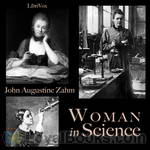 Woman in Science
Woman in Science
A history of woman's role in science through the ages and the many contributions she has made.Chapter Titles are:1. Woman's Long Struggle for Things of the Mind2. Woman's Capacity for Scientific Pursuits3. Women in Mathematics4. Women in Astronomy5. Women in Physics6. Women in Chemistry7. Women in the Natural Sciences8. Women in Medicine and Surgery9. Women in Archæology10. Women as Inventors11. Women as Inspirers and Collaborators in Science12. The Future of Women in Science: Summary and Epilogue | |
By: John Bagnell Bury (1861-1927) | |
|---|---|
 Idea of Progress: An Inquiry into Its Origin and Growth
Idea of Progress: An Inquiry into Its Origin and Growth
John Bagnell Bury was Regius Professor of Modern History at Cambridge University in the early twentieth century. In The Idea of Progress, he assesses the concepts of history found in the classical period and then traces the historical development of the concept of political and social progress by looking at writers from the sixteenth to the nineteenth century. It is interesting to consider what the history of the past hundred years would add to such an analysis. - Summary by Barry Ganong | |
By: John Beresford (1888-1940) | |
|---|---|
 Diary of a Country Parson
Diary of a Country Parson
The Revd. James Woodforde was an English clergyman, best known for his vivid account of parish life in the 18th century. His diary, edited by John Beresford, remained unpublished until the 20th century. The diary provides a wonderfully full account of the small community in which the diarist lived — of the births and deaths, comings and goings, illnesses, and annual celebrations, along with many other details of daily life. As a churchman, Woodforde himself was conscientious by the standards of his time, charitable and pious without being sanctimonious and again typical of his day, deeply suspicious of enthusiasm... | |
By: John Berryman (1919-1988) | |
|---|---|
 Card Trick
Card Trick
The Psi Lodge had their ways and means of applying pressure, when pressure was needed. But the peculiar talent this fellow showed was one that even they'd never heard of...! | |
By: John Burroughs (1837-1921) | |
|---|---|
 John James Audubon
John James Audubon
Audubon’s life naturally divides itself into three periods: his youth, which was on the whole a gay and happy one, and which lasted till the time of his marriage at the age of twenty-eight; his business career which followed, lasting ten or more years, and consisting mainly in getting rid of the fortune his father had left him; and his career as an ornithologist which, though attended with great hardships and privations, brought him much happiness and, long before the end, substantial pecuniary rewards. | |
 Birds and Bees, Sharp Eyes, and Other Papers
Birds and Bees, Sharp Eyes, and Other Papers
Probably no other American writer has a greater sympathy with, and a keener enjoyment of, country life in all its phases—farming, camping, fishing, walking—than has John Burroughs. His books are redolent of the soil, and have such "freshness and primal sweetness," that we need not be told that the pleasure he gets from his walks and excursions is by no means over when he steps inside his doors again. As he tells us on more than one occasion, he finds he can get much more out of his outdoor experiences by thinking them over, and writing them out afterwards... | |
 Bird Stories from Burroughs
Bird Stories from Burroughs
What a better way to learn about birds than to read this delightful collection of interesting bird stories! John Burroughs was a nature essayist. These creative, observation- and emotion-driven stories about birds (largely from the Northeastern states), have been gathered together into a single volume from all his various works. Every chapter follows one species of birds, and the chapters have been arranged chronologically according to the time of the bird's arrival during the year. This collection has lovely illustrations of the birds by Louis Agassiz Fuertes, and some stories also have poems to go along with them. | |
By: John Cargill Brough (1834-1872) | |
|---|---|
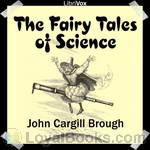 The Fairy Tales of Science
The Fairy Tales of Science
This book, written in the mid 19th century and illustrated by Charles H. Bennett, provides an entertaining introduction to topics in science for children. In each chapter, the author uses a popular myth or fairy tale to lay the groundwork for an equally fascinating "fairy tale of science" full of interesting facts and real life examples. | |
By: John Clay Coleman | |
|---|---|
 Jim Crow Car; Or, Denouncement of Injustice Meted Out to the Black Race
Jim Crow Car; Or, Denouncement of Injustice Meted Out to the Black Race
"My opposition to injustice, imposition, discrimination and prejudice, which have for many years existed against the colored people of the South, has led to this little book. In many parts of America the press has been furnished with “matter” for defending the colored people, through the medium of “Coleman’s Illustrated Lectures.” By request of my many auditors, some of whom being leading elements of the Northern States and Canada, this volume is published. Many persons interested in the welfare of the negro, have sought a more elaborate book on the Southern horrors... | |
By: John D. Rockefeller (1839-1937) | |
|---|---|
 Random Reminiscences of Men and Events
Random Reminiscences of Men and Events
A good book by the oil revolutionist of the 20th century. As they say "Men should listen to experience" and this book is all about the experience of the second highest taxpayer of the US during the 20's. Though it is not in the book, this is a small poem he wrote:I was early taught to work as well as play,My life has been one long, happy holiday;Full of work and full of play-I dropped the worry on the way- And God was good to me everyday. | |
By: John Dewey (1859-1952) | |
|---|---|
 Human Nature And Conduct - Part 1, The Place of Habit in Conduct
Human Nature And Conduct - Part 1, The Place of Habit in Conduct
John Dewey, an early 20th Century American philosopher, psychologist, educational theorist saw Social Psychology as much a physical science as Biology and Chemistry. This project encompasses Part 1 of 4 of his book Human Nature and Conduct. Dewey's uses the word "HABIT" as a specialized catch-all word to describe how a person and his/her objective environment interact. This interaction is the basis for moral judgement. Dewey writes: "All habits are demands for certain kinds of activity; and they constitute the self.” In other places he also asserts that "Habits are Will." - Summary by William Jones, Soloist | |
By: John Dutton Wright (1866-1952) | |
|---|---|
 What the Mother of a Deaf Child Ought to Know
What the Mother of a Deaf Child Ought to Know
Wright, a pioneer in the education of the deaf, was a strong advocate for acoustic and auricular training. In this little book, he tries to advise the parents of deaf children and reassure them that there can be a successful and happy life for them. | |
By: John Gregory Bourke (1846-1896) | |
|---|---|
 Apache Campaign In The Sierra Madre
Apache Campaign In The Sierra Madre
An account of the expedition [of the U.S. Army] in pursuit of the hostile Chiricahua Apaches in the spring of 1883. Bourke was a Medal of Honor awardee in the American Civil War whose subsequent Army career included several campaigns in the Indian wars of the mid to late 19th century in the American West. He wrote prolifically. He was mostly free of the unfortunate disdain for Native Americans common in 19th century America. He was quite admiring of many aspects of the Native American. “… Bourke had the opportunity to witness every facet of life in the Old West—the battles, wildlife, the internal squabbling among the military, the Indian Agency, settlers, and Native Americans... | |
 Medicine-Men Of The Apache
Medicine-Men Of The Apache
“Herewith I have the honor to submit a paper upon the paraphernalia of the medicine-men of the Apache and other tribes. Analogues have been pointed out, wherever possible, especially in the case of the hoddentin and the izze-kloth, which have never to my knowledge previously received treatment.” . Bourke was a Medal of Honor awardee in the American Civil War whose subsequent Army career included several campaigns in the Indian wars of the mid to late 19th century in the American West. He wrote prolifically... | |
By: John Jacob Astor IV (1864-1912) | |
|---|---|
 A Journey in Other Worlds: A Romance of the Future
A Journey in Other Worlds: A Romance of the Future
A Journey in Other Worlds: A Romance of the Future is a science fiction novel by John Jacob Astor IV, published in 1894. The book offers a fictional account of life in the year 2000. It contains abundant speculation about technological invention, including descriptions of a world-wide telephone network, solar power, air travel, space travel to the planets Saturn and Jupiter, and terraforming engineering projects — damming the Arctic Ocean, and adjusting the Earth’s axial tilt (by the Terrestrial Axis Straightening Company)... | |
By: John Kenlon (1861-1940) | |
|---|---|
 Fires and Fire-Fighters
Fires and Fire-Fighters
John Kenlon became a New York City firefighter in 1887, and was appointed Fire Chief in 1911. In 1913, he wrote this authoritative book surveying the history of fire-fighting from ancient Rome to 20th-century New York. The first part of the book explores the evolution of fire-fighting techniques in various countries and the development of equipment and organization, and describes several famous historical fires and how they were fought. The remainder of the book discusses in greater detail some particular types of fires confronting an urban fire department in 1913, such as hotel, theater, factory, hospital, and school fires, sea port fires, and skyscraper fires... | |
By: John M. Corbett | |
|---|---|
 Aztec Ruins National Monument, New Mexico
Aztec Ruins National Monument, New Mexico
This U.S. National Park Service historical handbook from 1962 introduces the reader to the history, geography, and archaeology of the Aztec Ruins and surrounding area. It explores what has been learned about the early people who settled there and discusses what the ruins were like at the time of publication. - Summary by Verla Viera | |
By: John M. Douglass | |
|---|---|
 Indians in Wisconsin's History
Indians in Wisconsin's History
Pre-European arrival history of Wisconsin's Native American tribes, with discussions of their way of life, crafts, clothing, shelter, hunting, fishing and farming. Their activity and battles during French, British and U.S. rule of the territory. Extermination and forced removal of tribes to agencies and reservations. Numbers of survivors from original tribes and plight of those remaining in the 20th century. Popular Science Handbook No. 6, published by the Milwaukee Public Museum in 1954. Summary by Verla Viera | |
By: John Muir (1838-1914) | |
|---|---|
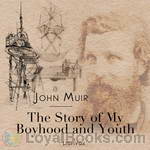 The Story of My Boyhood and Youth
The Story of My Boyhood and Youth
“The only fire for the whole house was the kitchen stove, with a fire box about eighteen inches long and eight inches wide and deep,- scant space for three or four small sticks, around which in hard zero weather all the family of ten shivered, and beneath which in the morning we found our socks and coarse, soggy boots frozen solid.” Thus, with perceptive eye for detail, the American naturalist, John Muir, describes life on a pioneer Wisconsin farm in the 1850’s. Muir was only eleven years old when his father uprooted the family from a relatively comfortable life in Dunbar, Scotland, to settle in the backwoods of North America... | |
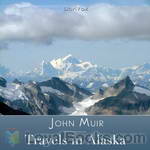 Travels in Alaska
Travels in Alaska
In 1879 John Muir went to Alaska for the first time. Its stupendous living glaciers aroused his unbounded interest, for they enabled him to verify his theories of glacial action. Again and again he returned to this continental laboratory of landscapes. The greatest of the tide-water glaciers appropriately commemorates his name. Upon this book of Alaska travels, all but finished before his unforeseen departure, John Muir expended the last months of his life. | |
By: John Munro (1849-1930) | |
|---|---|
 The Story of Electricity
The Story of Electricity
In the book's preface, the author writes: "Let anyone stop to consider how he individually would be affected if all electrical service were suddenly to cease, and he cannot fail to appreciate the claims of electricity to attentive study."In these days when we take for granted all kinds of technology - communications, entertainment, medical, military, industrial and domestic - it is interesting to learn what progress had been made in the fields of electricity and technology by the beginning of the 20th century... | |
By: John Murray (1841-1914) | |
|---|---|
 Ocean: A General Account Of The Science Of The Sea
Ocean: A General Account Of The Science Of The Sea
Sir John Murray, considered to be the father of modern oceanography, discusses the variations in the depths of oceans, and the methods and instruments used to measure such depths. He discusses many properties of oceanic waters including salinity, compressibility, pressure, colour, viscosity, and the presence of dissolved gases. The author addresses changes in density of water and its impact on the motion of water while describing ocean currents. He gives details of a variety of marine organisms based on the ocean depths at which they are found... | |
By: John Phin (1830-1913) | |
|---|---|
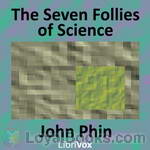 The Seven Follies of Science
The Seven Follies of Science
The seven follies of science; a popular account of the most famous scientific impossibilities and the attempts which have been made to solve them to which is added a small budget of interesting paradoxes, illusions, and marvels. | |
By: John Stuart Mill (1806-1873) | |
|---|---|
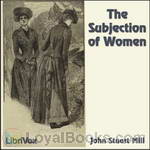 The Subjection of Women
The Subjection of Women
The Subjection of Women is the title of an essay written by John Stuart Mill in 1869, possibly jointly with his wife Harriet Taylor Mill, stating an argument in favor of equality between the sexes. It offers both detailed argumentation and passionate eloquence in opposition to the social and legal inequalities commonly imposed upon women by a patriarchal culture. Just as in “On Liberty,” Mill defends the emancipation of women on utilitarian grounds, convinced that the moral and intellectual advancement of women would result in greater happiness for everybody. | |
 Auguste Comte and Positivism
Auguste Comte and Positivism
Part 1 lays out the framework for Positivism as originated in France by Auguste Comte in his Cours de Philosophie Positive. Mill examines the tenets of Comte's movement and alerts us to defects. Part 2 concerns all Comte's writings except the Cours de Philosophie Positive. During Comte's later years he gave up reading newspapers and periodicals to keep his mind pure for higher study. He also became enamored of a certain woman who changed his view of life. Comte turned his philosophy into a religion, with morality the supreme guide. Mill finds that Comte learned to despise science and the intellect, instead substituting his frantic need for the regulation of change. | |
By: John Tyndall (1820-1893) | |
|---|---|
 Faraday As A Discoverer
Faraday As A Discoverer
This is the first of two related Faraday projects. It is about Faraday and deals more with biographical references to Faraday, outlining the important junctures in his life. The second, On the Various Forces of Nature, consists of lectures by Faraday covering a non-mathematical survey of the fundamental forces of nature and some relationships among them. Future projects will feature the 19th century scientists upon whose shoulders Einstein stood while developing his Theory of Relativity, including Humboldt, Lorentz, Michelson, Morley, Curie and Eddington. Summary by William A Jones | |
By: John W. Campbell (1910-1971) | |
|---|---|
 The Ultimate Weapon
The Ultimate Weapon
The star Mira was unpredictably variable. Sometimes it was blazing, brilliant and hot. Other times it was oddly dim, cool, shedding little warmth on its many planets. Gresth Gkae, leader of the Mirans, was seeking a better star, one to which his "people" could migrate. That star had to be steady, reliable, with a good planetary system. And in his astronomical searching, he found Sol.With hundreds of ships, each larger than whole Terrestrial spaceports, and traveling faster than the speed of light, the Mirans set out to move in to Solar regions and take over... | |
By: John Wesley Powell (1834-1902) | |
|---|---|
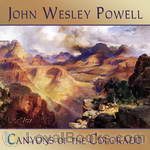 Canyons of the Colorado, or The exploration of the Colorado River and its Canyons
Canyons of the Colorado, or The exploration of the Colorado River and its Canyons
John Wesley Powell was a pioneer American explorer, ethnologist, and geologist in the 19th Century. In 1869 he set out to explore the Colorado and the Grand Canyon. He gathered nine men, four boats and food for ten months and set out from Green River, Wyoming, on May 24. Passing through dangerous rapids, the group passed down the Green River to its confluence with the Colorado River (then also known as the Grand River upriver from the junction), near present-day Moab, Utah. The expedition’s route... | |
By: John Wood Campbell Jr. (1910-1971) | |
|---|---|
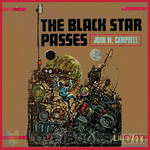 The Black Star Passes
The Black Star Passes
A sky pirate armed with superior weapons of his own invention... First contact with an alien race dangerous enough to threaten the safety of two planets... The arrival of an unseen dark sun whose attendant marauders aimed at the very end of civilization in this Solar System. These were the three challenges that tested the skill and minds of the brilliant team of scientist-astronauts Arcot, Wade, and Morey. Their initial adventures are a classic of science-fiction which first brought the name of their author, John W. Campbell, into prominence as a master of the inventive imagination. | |
By: John Wood Campbell. Jr. (1910-1971) | |
|---|---|
 Islands of Space
Islands of Space
As Earth's faster-than-light spaceship hung in the void between galaxies, Arcot, Wade, Morey and Fuller could see below them, like a vast shining horizon, the mass of stars that formed their own island universe. Morey worked a moment with his slide rule, then said, "We made good time! Twenty-nine light years in ten seconds! Yet you had it on at only half power...." Arcot pushed the control lever all the way to full power. The ship filled with the strain of flowing energy, and sparks snapped in the air of the control room as they raced at an inconceivable speed through the darkness of intergalactic space... | |
 Invaders from the Infinite
Invaders from the Infinite
The famous scientific trio of Arcot, Wade and Morey, challenged by the most ruthless aliens in all the universes, blasted off on an intergalactic search for defenses against the invaders of Earth and all her allies. World after world was visited, secret after secret unleashed, and turned to mighty weapons of intense force--and still the Thessian enemy seemed to grow in power and ferocity. Mighty battles between huge space armadas were but skirmishes in the galactic war, as the invincible aliens savagely advanced and the Earth team hurled bolt after bolt of pure ravening energy--until it appeared that the universe itself might end in one final flare of furious torrential power.... | |
By: John Woodhouse Audubon (1812-1862) | |
|---|---|
 Audubon's Western Journal: 1849-1850
Audubon's Western Journal: 1849-1850
John Woodhouse Audubon , son of the famous painter John James Audubon and an artist in his own right, joined Col. Henry Webb's California Company expedition in 1849. From New Orleans the expedition sailed to the Rio Grande; it headed west overland through northern Mexico and through Arizona to San Diego, California. Cholera and outlaws decimated the group. Many of them turned back, including the leader. Audubon assumed command of those remaining and they pushed on to California, although he was forced to abandon his paints and canvases in the desert…... | |
By: Joseph B. Seabury (1846-1923) | |
|---|---|
 Porto Rico: The Land of the Rich Port
Porto Rico: The Land of the Rich Port
Puerto Rico was acquired by the United States in 1898 following the Spanish-American War. This volume was written in 1903 as Book XII in the series “The World and Its Peoples.” The series was intended for young people, but this work would be fun listening for those of any age interested in what Puerto Rico was like in the early 20th century. Intended to familiarize people in the U.S. with their new territory, topics include the island’s people, geography, climate, flora, fauna, and schools. There is also some coverage of Puerto Rican history and the new government established under U.S. rule. | |
By: Joseph Banks (1743-1820) | |
|---|---|
 Endeavour Journal of Sir Joseph Banks from 25 August 1768-12 July 1771
Endeavour Journal of Sir Joseph Banks from 25 August 1768-12 July 1771
In this Journal, Joseph Banks records almost daily observations of the journey of the ship the Endeavour on the first of James Cook’s voyages to the Pacific during the years 1768-1771. There are also more detailed accounts of the events, people, flora, fauna and geology of the places where they landed. They landed at Brazil, Tahiti, New Zealand, Australia, Batavia, Cape Town and St. Helena. Joseph Banks was one of the naturalists on the Endeavour, appointed by the Royal Society. The joint Royal Society, Royal Navy journey of the Endeavour was overtly a scientific expedition with the stated purpose of observing the transit of Venus from Tahiti... | |
By: Joseph E. Kelleam (1913-1975) | |
|---|---|
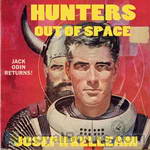 Hunters Out of Space
Hunters Out of Space
Originally published in the May, 1960 issue of Amazing Science Fiction Stories. Jack Odin has returned to the world of Opal, the world inside our own world, only to find it in ruins. Many of his friends are gone, the world is flooded, and the woman he swore to protect has been taken by Grim Hagen to the stars. Jack must save her, but the difficulties are great and his allies are few. | |
By: Joseph Lister (1827-1912) | |
|---|---|
 On the Antiseptic Principle of the Practice of Surgery
On the Antiseptic Principle of the Practice of Surgery
Joseph Lister was born near London in 1827. He studied medicine at the University of London and pursued a career as a surgeon in Scotland. He became professor of Surgery in Glasgow and later (1877) at Kings College Hospital, in London. Lister’s contribution to the advancement of surgery cannot be overestimated. Before his work on antisepsis, wounds were often left open to heal, leading to long recoveries, unsightly scarring, and not infrequently amputation or death due to infection. Lister’s work enabled more wounds to be closed primarily with sutures, drastically reducing healing time, scarring, amputations, and deaths due to infection... | |
By: Joseph Martin McCabe (1867-1955) | |
|---|---|
 Romance of the Romanoffs
Romance of the Romanoffs
The eighteenth, nineteenth and early twentieth centuries were periods of stark contrast between the opulent lifestyle of the rich and the extreme poverty of the peasants throughout the world. In addition, Russia straddled eastern and western cultures, not fitting neatly into either. The church was an important force, and those adhering to traditional eastern religions were peaceful and accustomed to 'doing as they were told'; followers of western thought were more eager for a democratic society. Add an autocratic czar and the conditions were ripe for revolution, corruption and murder... | |
By: Joseph Priestley (1733-1804) | |
|---|---|
 Experiments and Observations on Different Kinds of Air
Experiments and Observations on Different Kinds of Air
Joseph Priestley, FRS (13 March 1733 (O.S.) – 6 February 1804) was an 18th-century English theologian, Dissenting clergyman, natural philosopher, chemist, educator, and political theorist who published over 150 works. In “Experiments and Observations on Different Kinds of Air,” he reviews experiments with gases. A common theme in this work is measuring the volumes of gases held in glass tubes, and their increase or decrease when exposed to other substances. He also tests the effects of gases on mice, plants and insects... | |
By: Josephine Hunt Raymond | |
|---|---|
 Social Settlement Movement in Chicago
Social Settlement Movement in Chicago
This is Ms. Raymond's thesis submitted for the awarding of her master's degree from the University of Wisconsin Raymond clearly knows her subject well and describes the aims and practices of the various social settlements established in disadvantaged districts in the City of Chicago and with detail enough to offer a brief but comprehensive view of the social settlement ideal then in place at the turn of the 19th Century in Chicago and other major American cities. - Summary by KevinS | |
By: Jules Verne (1828-1905) | |
|---|---|
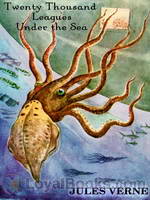 Twenty Thousand Leagues Under the Sea
Twenty Thousand Leagues Under the Sea
An early science fiction novel written by the second most translated author, French writer Jules Verne, the classic tale depicts an incredible sea expedition on board a state-of-the-art submarine. First published in 1870 and a part of the Voyages Extraordinaires series, the novel is regarded as one of the most thrilling adventure stories and one of Verne’s greatest pieces of work. Immersed in themes of exploration, avant-garde technology, and man’s insatiable desire for knowledge and scientific progression, Twenty Thousand Leagues Under the Sea has been an influence for many writers as well as an inspiration for numerous film adaptations... | |
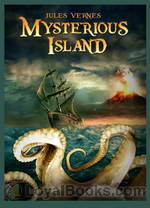 The Mysterious Island
The Mysterious Island
The Mysterious Island is another exquisite novel written by the master of adventure writing, Jules Verne. The novel has been seen as the sequel to two other famous novels written by the same author: Twenty Thousand Leagues Under the Sea and In Search of the Castaway. The story revolves around five Americans who live in a dark and harsh environment as prisoners of the American Civil War. Depleted by famine and death all around them, the five war prisoners take a big risk and escape by hijacking a hot air balloon... | |